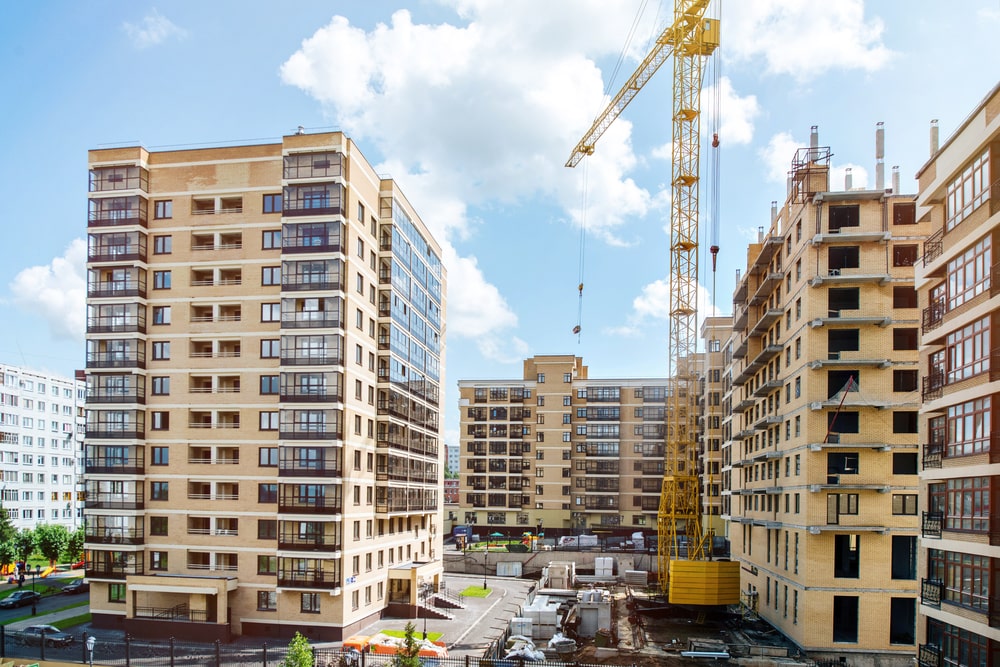Sector - Legal
New dwellings are zero rated for VAT, right? Not quite.

In this article Kevin Hall at Wright Hassall will explain the situation regarding zero-rating for VAT and property development, cover some of the common errors and changes that lead to VAT headaches and highlight simple steps to ensuring the rates are right for every aspect of a development.
VAT is the awkward tax
Property professionals generally expect the new dwellings they construct and sell, will be zero rated for VAT, but a variety of cases demonstrate the VAT rules relating to property are opaque and traps exist for the unwary, which have potentially very expensive consequences.
Take for example a small office block with a penthouse flat, converted into four new town houses, which are then sold. A developer budgeting to recover the VAT paid on costs, would be making an error leading to serious financial difficulty.
Converting instead into four flats would have enabled the developer to recover VAT on the majority of their costs. This makes considering the VAT implications at the planning stage critical to avoid hidden VAT costs which the courts have labelled “absurd” and are contrary to common sense.
Zero rating is not straightforward
The construction and supply of a new dwelling can be zero-rated, with a number of tests to meet, which require that:
- the dwelling consists of self-contained living accommodation;
- there is no provision for direct internal access from the dwelling to any other dwelling or part of a dwelling;
- the separate use, or disposal of the dwelling is not prohibited by the term of any covenant, statutory planning consent or similar provision; and
- statutory planning consent has been granted in respect of that dwelling and its construction or conversion has been carried out in accordance with that consent.
Grey areas have been explored in the courts, where taxpayers challenge the opinion of HMRC. The legislation also contains further tests, which can prevent supplies being zero-rated, such as any existing buildings not demolished to ground level; planning consent not specifying retained façades; or works started before planning permission is granted, even if granted retrospectively.
If any single test is not met, the construction will be standard rated; and the sale will be either standard-rated or exempt with no recovery of VAT on costs.
Conversions on the rise
Conversions often involve a mix of VAT rates. Sales of new dwellings after conversion might be zero-rated, but the conversion works themselves will be reduced rated or standard rated.
It is generally best practice to secure the lowest rate of VAT permitted for construction services.
Clients might be unable to recover the VAT charged to them and will look for competitors who are permitted to charge a lower rate of VAT. Alternatively, if the price is a market rate, the lower the rate of VAT, the higher the profit margin. The VAT rate can be the difference between winning and losing a client or between a profitable and loss-making job.
That said, if a low rate is charged inappropriately, the supplier is responsible for the VAT and HMRC will charge the supplier for the missing VAT and impose penalties and interest.
Determining the appropriate rate of VAT is a complex process – what existed before the works began and what is created after the conversion must be carefully considered.
Care should be taken over factors as varied as whether the new domestic reverse charge applies, the status of different parts of a site and whether materials used qualify for the reduced rate. There are also requirements that any statutory planning consent and (additionally for conversions) any statutory building controls are in place from the outset.
Non-recovery of VAT
It is generally best practice to secure the lowest rate of VAT permitted for construction services. The rate applied can be the difference between winning and losing a client or between a profitable and loss-making job.
Purchases often include, among other things, the purchase of the property itself, construction work, planning agents, legal fees, architects services, sales agents and the materials themselves. The VAT paid on costs can be a significant number and multiple planning points should be considered at the earliest opportunity to reduce the VAT.
For example, in order to remove VAT on the purchase of a property, the purchaser can often act unilaterally to disapply it, but they are required to meet certain deadlines, and discussion with the vendor is encouraged as the implications of doing so are not straightforward.
When considering professional fees, significant VAT savings can be achieved if the project is structured appropriately from the outset.
Charging the reduced rate of VAT is important even if the client expects to recover the VAT charged in full, as property projects frequently change direction, which can render the VAT unrecoverable. For example, if a developer later rents out the new dwellings, which is an exempt supply requiring VAT on attributable purchases to be unrecoverable.
The ‘absurd’ example
A constructor creates four new town houses in a building that previously had three floors of offices and a penthouse flat on the top. Typically, the developer would believe the sale of each new house should be zero-rated because there was now a new dwelling, where no complete dwelling existed previously.
This is correct for the conversion works which could qualify for the reduced rate. However, the same reasoning is not correct when it comes to selling the new houses. Note (9) of the VAT Act 1994 states:
The conversion, other than to a building designed for a relevant residential purpose, of a non-residential part of a building which already contains a residential part, is not included within items 1(b) or 3 unless the result of that conversion is to create an additional dwelling or dwellings.’
Each of the four new houses contains a part of the original penthouse flat. As a result, the sales of the four new houses will be exempt and VAT on costs cannot be recovered, contrary to the developer’s expectations.
This VAT cost only arises because the property had been divided vertically, dividing the office block and penthouse flat into four tall townhouses.
Had the conversion instead occurred horizontally, the sales of the new dwellings on the first three floors would have qualified for zero rating and the VAT on all attributable costs would have been recoverable in full. The works to the top floor penthouse would not have qualified for the reduced rate and the sale would still be exempt.
This is a result that even the courts have called “absurd”.
Plan early to mitigate risk
This example illustrates how varied and awkward the VAT rules are. It is easy to overlook an opportunity or unexpectedly incur a large VAT liability. As the market for retail stores diminishes and the demand for new housing expands, residential conversions will increase. It will be important for constructors and developers to undertake early and careful VAT planning in order to avoid converting profits into losses.
Kevin Hall is a partner at law firm Wright Hassall and is a renowned VAT specialist. He provides clear, practical advice to businesses and their advisers to help them navigate the complexities thrown up by this awkward tax.
If you would like to read more stories like this, then please click here
Related Articles
More Legal News
- Radical action to speed up removal of unsafe cladding
18 Dec 24
The government has set out tough new targets to fix unsafe buildings in England.
- Biodiversity Net Gain Now in Force – What Does It Mean for You?
12 Jul 24
The UK has significantly advanced by implementing Mandatory Biodiversity Net Gain (BNG) in the ongoing
- The low-down on high risk
25 Sep 23
What exactly is an High Risk Building and how does the industry need to be






